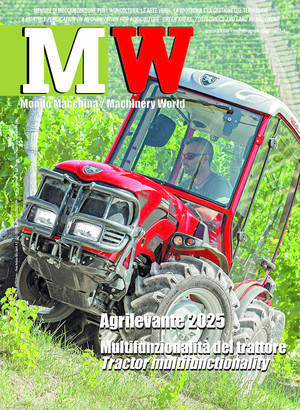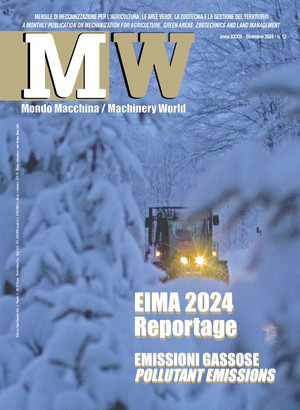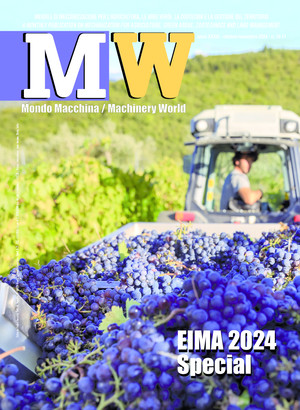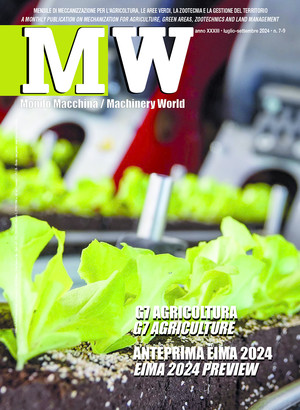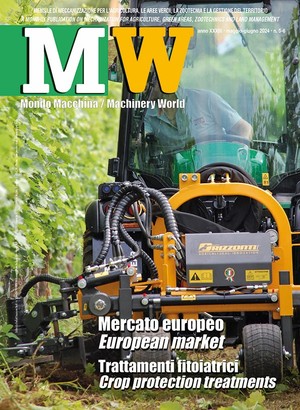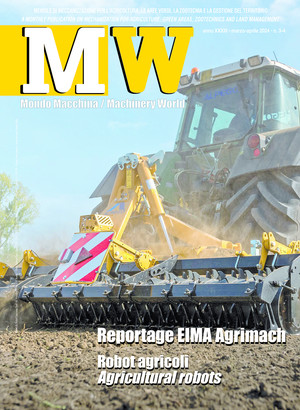
Mercosur, commercial opportunities for Italian companies
After 25 years of negotiations, the European Commission and the Mercosur member countries have signed an agreement to create one of the world's largest free trade areas. Among other things, the agreement includes a a EUR 4 billion reduction in duties and non-tariff barriers
On December 6, 2024, the European Commission finalized political negotiations for a free trade agreement with the Mercosur countries: Argentina, Brazil, Paraguay and Uruguay. The agreement will become binding for the parties only upon completion of their respective internal legal processes; it must be ratified by the various States in order for it to enter into force. The stated goal is to create one of the largest free trade zones in the world, with a global market of approximately 750 million consumers. The European Commission estimates that the reduction in duties for EU companies will amount to around EUR 4 billion. The agreement focuses on both sustainability, with reference to the Paris Agreement on the climate, and the digital and green transition of the Mercosur countries, for which resources totalling EUR 1.8 billion will be directed (from the Global Gateway initiative). After 25 years of negotiations, the agreement aims to significantly increase trade between the EU and Mercosur, which currently accounts for only 2% of non-EU trade, and less than 1% if we include trade between European countries. If we make a comparison to 2023 data - processed by ISPI in November 2024 - we can easily see the much more significant amounts of EU foreign trade towards other macro areas of the world: 16.8% with the USA, 10.1% with EFTA countries, 6.5% with Switzerland, 5% with the ASEAN countries of South East Asia and 2.2% with India. Despite the uncertainties, some quite strong, in several sectors - that of agricultural in particular - in some EU countries (France, Poland, and even in Italy there are critical voices) it is plausible that the acceleration desired by the Commission is linked to the new international context which sees - with globalization now cornered - the need to broaden the commercial horizon of the EU with respect to the increasingly difficult commercial relations, albeit for different reasons, with the USA, China and Russia. Latin America (LatAm), moreover, is also characterized by so-called nearshoring or the more recent “friendshoring,” (according to the World Bank definition “the practice of bringing offshore operations to close or friendly countries”) which, initially focused on Mexican production activities destined for the US market, although is also now spreading to the Mercosur countries. Many global companies, including the so-called Italian pocket-sized multinationals (companies with strong local roots, highly specialized and with a propensity for export, and with a presence on international markets, but with economic dimensions that are decidedly smaller than global multinationals, hence the nickname "pocket-sized" - ed.), are thus choosing to locate in the LatAm region in order to supply their global customers directly and in a more competitive manner from a logistic point of view.
Italy's numbers (European Commission data from December 2024). Following the signing of the Agreement, the European Commission provided data on its websites on the importance of the Mercosur market for EU companies. The website of the European Commission's Representative in Italy has published an information sheet on the Agreement. Here is a brief overview of its essential data. There are 8,000 Italian companies that export to Mercosur and that employ just under a million people. Their business activity creates a trade surplus of EUR 1.2 billion for Italy. The balance comes from Italian exports in the amount of EUR 7.2 billion and from Italian imports from Mercosur totalling EUR 6 billion (2023 data). The agreement will progressively eliminate duties on 91% of products, effectively affecting all components of sales to foreign markets. The effect on Italian export volumes will be extremely significant in light of current tariff levels. For machinery, electrical equipment and means of transport, the current level of duties applied varies between 15% and 35%. It should be pointed out that this category of products currently has a weight of EUR 3.6 billion in terms of Italy's sales to Mercosur. For agri-food products, the export share to the Area is only 5%, a consequence of import duties ranging from 27% to 55%.
Mercosur numbers and outlook. Let us now try to take a look at the economies of the Mercosur by relying on the outlooks of primary international organizations and research centers. The common thread in these forecasts is to try to analyze the possible effects of the measures of the new US Administration in terms of trade policies towards other countries of the American continent. The authoritative “The Economist Intelligence Unit” (EIU) predicts that the trade and tariff policy of the new US administration could affect not only Mexico and Canada but also other LatAm states that have significant migratory flows towards the United States and in any case those with greater dependence on the US in terms of the importance of their exports. The data processed by EIU report the following export amounts to the USA for the main Mercosur countries: Argentina 8%, Brazil 11%, and Uruguay 8%. For Argentina and Brazil, the USA is the 2nd largest export market, and for Uruguay, the third. It will therefore be appropriate – for Italian companies – to closely follow in particular the evolution of trade relations and tariff policies of the USA towards the two main Latin American markets, and with the Mercosur as a whole.
The World Bank also outlines the prospects for 2025 for the Latin American economies in its end-2024 Outlook. In general, the countries in the area show that they have effectively fought the traditional enemy of inflation and have now also overcome the negative economic effects caused by the pandemic. Their monetary authorities have essentially been able to meet the challenges of recent years as well as the monetary authorities of the most economically advanced countries. The current scenario the decline in interest rates as a positive for Latin America, affecting both the US and the countries of the region, and this is expected to continue in 2025. We can therefore glimpse concrete prospects for a more sustained growth of the region's economy than in the past.
The World Bank also reminds us that the estimated growth of LatAM economies in 2024 was 1.9%, the lowest among the Global Market Areas. For 2025, WB estimates are more optimistic, considering a possible 2.6% increase in GDP of the area; this would give impetus to productive investments and would make it possible to better manage the long-standing fiscal issue that is a serious element of concern for many economies in the region. The World Bank also provides estimates for individual markets. For the main Mercosur countries, Argentina and Brazil, economic growth is expected to be 5% and 2.2%, respectively, in 2025, while in 2026 it is expected to be 4.7% for Argentina and 2.3% for Brazil. The closing estimates for 2024 were – again from the same source – negative by -3.5% for Argentina and increasing by 2.8% for Brazil. On the effects of possible trade policies towards the LatAm region and Mercosur countries of the new Trump administration, the IIF – Institute of International Finance in Washington – has also published reports showing that Brazil is the country with the macroeconomic profile that would be the more “shielded” than others from the effects of possible protectionist policies by the USA. In summary, the analyses of these authoritative international organizations indicate – using a term from diplomacy rather than economics – a cautious optimism about the economic prospects for 2025 in Latin America, which significantly includes the countries belonging to and associated with the Mercosur.
Opportunities for agribusiness companies. The success of the EU-Mercosur Agreement, which must obviously be ratified by the member states, opens up ample opportunities for Italian companies and those in the agro-industrial sector - to which Mondo Macchina is addressed - to start or increase their commercial relations with Latin America. The most obvious effect is that the implementation of the Free Trade Area, with the progressive reduction of import tariffs, providing the importer with a lower final cost of the Italian product (machinery or service), and proportionally a reduction in the associated financial costs: payment commissions, import financing charges (and possibly export advances for Italian companies).
But the real challenge capable of increasing the opportunities for Italian exports to Mercosur concerns non-tariff barriers. Indeed, apart from the action on customs tariffs, much is expected from the interventions on access to the Mercosur market envisaged by the Agreement: improved access for both products and services, simplification of customs procedures, greater possibilities for EU companies to participate in public procurement and service tenders dedicated to exporting SMEs from both sides of the ocean (with easier access to information and online services). In fact, what companies operating on the Latin American market report is the presence of barriers, customs and otherwise, of various kinds, relating - for example - to labelling, health controls, quality certifications, complexity of tax regulations (both for export and for the establishment of companies/branches on site). Making the matter even more complex is the federal form of the two main Mercosur countries: Argentina and Brazil. In this instance it is also necessary to deal with the regulations and procedures of the individual states/federal provinces. Up to now a challenge for Italian companies has also been that of organizing internally in order to have sufficient expertise in terms of export procedures, in addition to all the considerations related to additional administrative burdens compared to other market areas. Similar issues evidently concern - with a greater degree of complexity - companies that intend to open a local business or a branch in these countries.
The third type of opportunity that the agreement opens up relates to the efforts the parties must make in terms of product adaptation. The Agreement, in fact, includes specific commitments regarding the sustainability of production, digital transition, and on the protection of the quality standards required by the EU (in particular in terms of food safety) to protect consumers. With regard to this last aspect, as we mentioned at the beginning, EU resources are allocated within the Global Gateway initiative but those of international financial organizations such as the Inter-American Development Bank (IDB), which recently promoted and financed the Mercosur Digital Citizen project which will be launched initially in Argentina and Brazil, could also be made available. The adaptation of production standards and digitalization in Mercosur countries seems that they may be capable of offering concrete opportunities to our agro-industrial companies, the food supply chain and those providing technological services for agriculture.
Ultimately, the success of the Agreement will also depend on its application - not only by the Member States - but also by the so-called "associated" Mercosur countries: Chile, Colombia, Ecuador, Guyana, Peru, and Suriname. Bolivian membership is in the process of being completed. Venezuela, on the other hand, which was a member of Mercosur, is currently suspended from participation under the Ushuaia Protocol on democratic commitment.
Financial instruments for international trade and direct investment. Even in this circumstance we would like to conclude this article by highlighting the typical characteristics of these markets in terms of financial support for transactions with foreign countries (Trade & Export Finance) and to local investment activities through foreign companies. As previously mentioned, the Mercosur countries and the LatAm area in general are characterized by significant exposure to macroeconomic variables of a financial, commercial and monetary nature. Instability and volatility have often characterized the main economic indicators of this region: inflation, exchange rate of local currencies (especially against the dollar), interest rates, economic growth trends, fiscal pressure (especially for local investments) and the stability of the banking sector. Inevitably, the movement of these variables also has repercussions on some ordinary activities for foreign operators. The policies of local authorities aim at controlling activities – including import and export – aimed at improving the management of both the local currency and interest rates. This, for example, leads to certain difficulties in opening non-resident accounts, understood as accounts in the name of the foreign company at local banks usually used to cover costs locally. It is difficult to open these non-resident accounts in a foreign currency (e.g. USD, EUR). If we then take into consideration any financing to local subsidiaries of foreign companies, the most interesting solution is financing in USD which allows for a more cautious management of fluctuations in the local currency and interest rates. As regards payment instruments to and from abroad, the practice is in line with those typical of international trade but with some significant peculiarities that can still be managed through the Italian banking system and possibly their local correspondents or subsidiaries. The area does indeed feature the use of some typical payment instruments and commitments (e.g. SBLC Standby Letter of Credit, fianzas, boletas de garantia, promissory notes/pagaré …) and, with regard to international guarantees (bonds), the requirements of underlying contractual rules that differ from those widely in use in global international trade. On these issues, it will be appropriate to consult with your reference bank for foreign operations, which may intervene - if necessary - also in collaboration with its correspondent institution in the foreign country. In this regard, it can be observed that the banking system in the Mercosur countries (and in general in LatAm) has oligopolistic characteristics associated with a significant presence of local banks controlled by important international financial institutions (especially North American or Spanish ones). Finally, in an international trade context characterized by deglobalization, bitter trade conflicts and an ever-widening system of sanctions, the Latin American region is situated in a relatively more stable context than other Global Market Areas, as also highlighted in the recent (January 2025) Political Risk Outlook by Verisk Maplecroft, a company specialized in Country Risk analysis.


